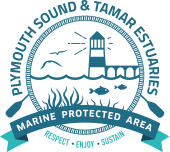Developments below the high water mark can have a profound effect on the dynamic marine environment. Careful design and planning can minimise these impacts and further information is given below along with different licenses and permissions required.
Potential impacts from coastal and marine development include:
• Disturbance to species protected under European law.
• Fragmentation of habitats where built structures divide the shore into smaller, less sustainable units.
• Obstruction to natural currents (hydrodynamics) by built structures such as slipways, walls. This can go onto cause erosion of key habitats such as saltmarshes and reedbeds.
• Disturbance to wintering birds through interference or noise.
• Physical loss of habitat area from built structures or land claim.
• Disturbance to the sediment and subsequent re-mobilisation of locked in contaminants.
• Alteration to the hydrodynamics by placement of pilings resulting in changes to sediment movement.
Impacts and possible mitigating actions will vary depending on the kind of development that is being planned:
Natural England’s advice on operations
The most up-to-date guidance on impacts from various kinds of development
You can use Natural England’s Designated Sites website to search for advice on operations relevant to the location, and the type, of the works you are planning.
Remember, if there are multiple conservation designations that apply to the location of your works, the advice may differ depending on the features (species or habitats) for each designation, so it’s important to check the advice for all designations.
